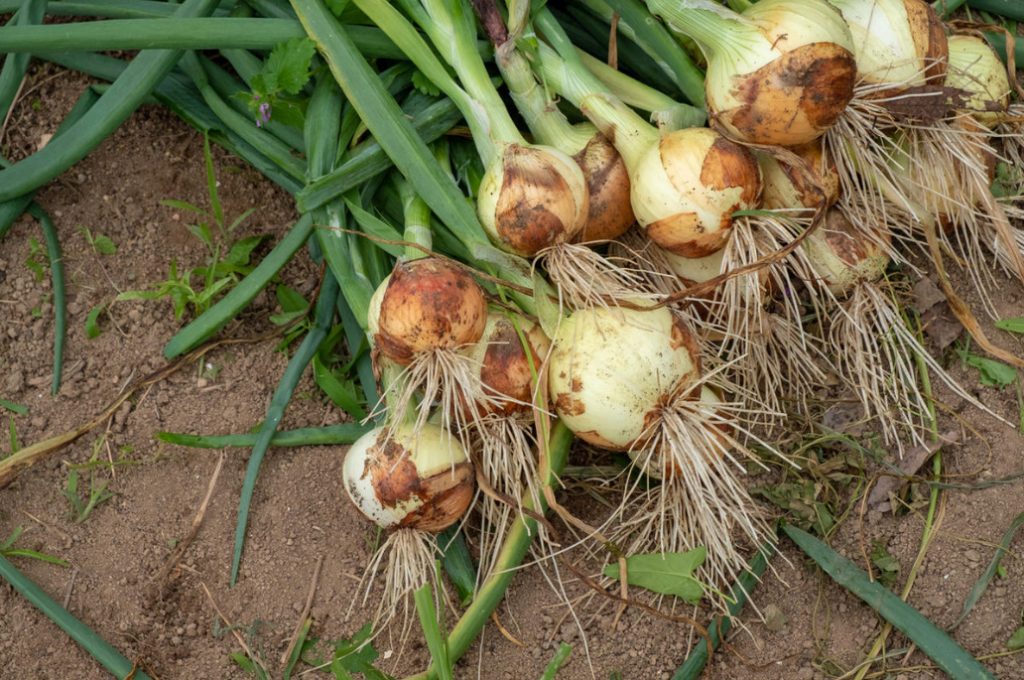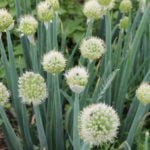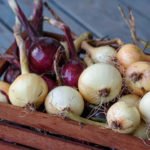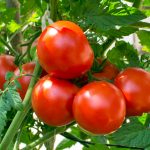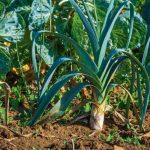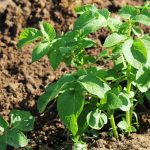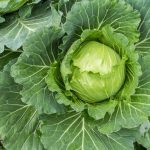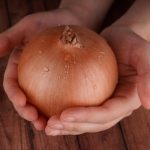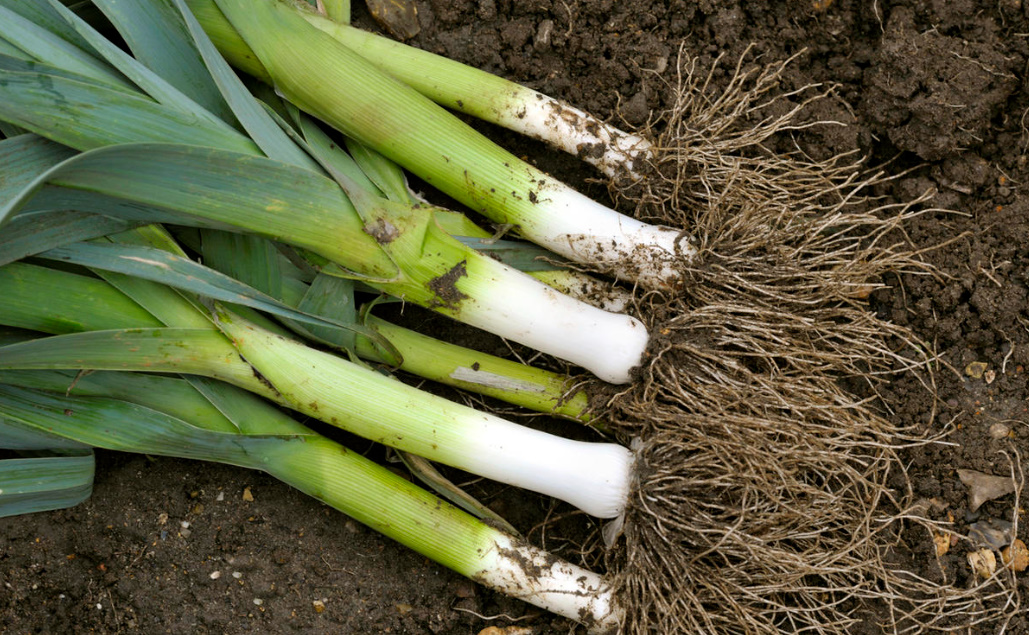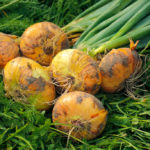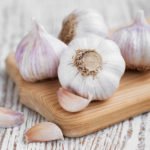Although it is considered that we do not have any irreplaceable ones, this does not apply to onions and garlic. Any hostess will confirm that in the kitchen without them anywhere! So summer residents try to grow onions and garlic larger, so that their reserves before the new crop is enough: weeding, watering, fertilizing. Do onions and garlic need to be fed? Let’s figure it out.
There are a great many ways to feed these crops, and sometimes there are directly contradictory recommendations. Therefore, our fertilizer application scheme is not an instruction, but a recommendation, a basis that each gardener can improve taking into account the individual conditions of the site. We will not link to calendar dates: there is a high risk of missing the optimal dates. It is much more practical to focus on the growth phase.
The scheme of feeding garlic
Garlic differs in terms of planting. The set of fertilizers for them will be the same, only the timing of application differs. Below is a scheme for feeding spring garlic.
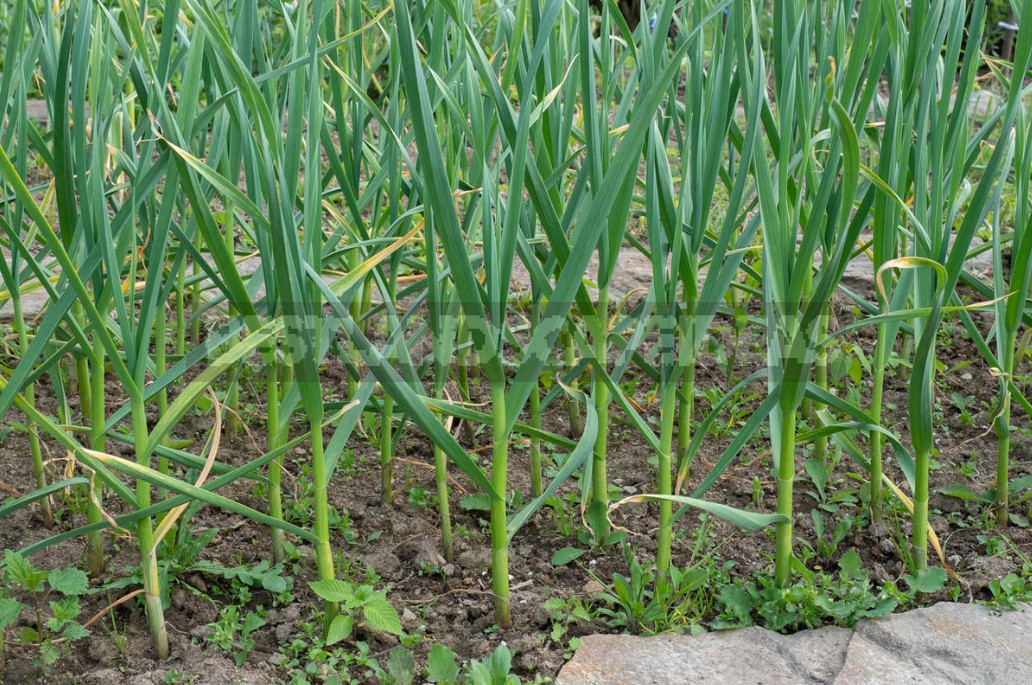
Top dressing # 1
As soon as the snow melts, the bed is spilled with mullein infusion. You can spread out Mature compost or humus in the aisles, add a little wood ash. Well, for those who do not use organic, you can replace it with nitrogen-phosphorus or complex spring fertilizers.
Top dressing # 2
The appearance of 2-3 leaves is a signal for the beginning of the second feeding. 20 g of ammonium nitrate per 1 m2 of plantings will be quite enough. You can replace saltpeter with urea, nitrogen-phosphorus or spring fertilizer complexes, the main thing is to adhere to the recommended application rate.
Top dressing # 3
When the formation of the bulb begins, it is optimal to use a complex fertilizer with phosphorus, potassium and trace elements. For onions and garlic — what you need.
If necessary, it can be repeated in 10 days. Just keep in mind: any feeding of garlic should be stopped a month before the expected harvest time.
The scheme of feeding onions
Onions have a shallow root system, so you can only get a large onion without fertilizing it on fertile soil.
Top dressing # 1
As soon as the feather has grown by 3-5 mm, a nutritious cocktail is prepared: 20 g of superphosphate and potassium sulfate are added to a bucket of mullein infusion. In this feeding should be the largest dose of nitrogen: now it is important for the onion to grow a good feather.
Top dressing # 2
When the bulb scales begin to form, add potassium sulfate and other phosphorous-potassium fertilizers. It is possible (and even better) that the complex contains trace elements.
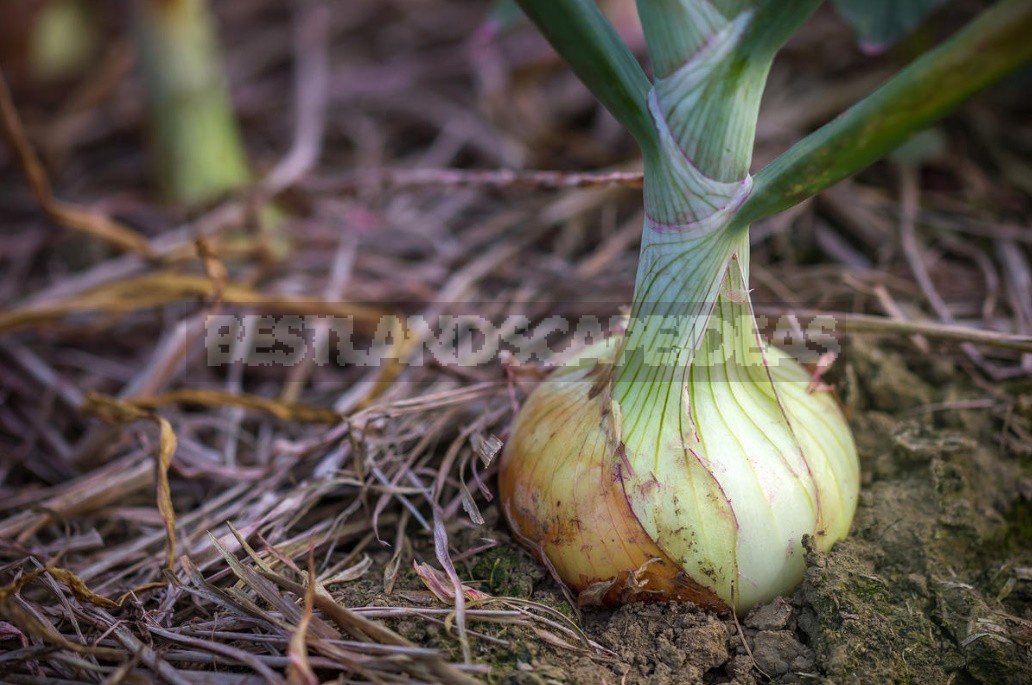
Top dressing # 3
10-14 days after the second one. You can use the same composition of fertilizers. Even better, if you use special ones for onions and garlic. Just remember: at least 20 days before cleaning, stop both watering and fertilizing.
My care plan
If someone had told me a few years ago that I was going to fertilize the beds with onions and garlic, I would have just laughed in response: what else, on my fat black soil! But when most of the land had to be set aside for seedlings and berries, and vegetables from year to year to grow in the same place, the situation became sad — the bulbs were getting smaller before our eyes, sometimes it was not possible to reach a new crop on their reserves. So was born a very simple and effective system of feeding onions and garlic, which has not let me down for three years.
Soil preparation
Since onion and garlic I always put for the winter, a bed seeded cover crops as soon as harvested. First in line — peas. He calmly manages to give a full harvest — that’s just have to water, because for several years the summer rains have been very rare. As soon as the last pods are collected, I seal the tops in the soil — and immediately sow phacelia. Every time it comes to this culture, I’m ready to sing its praises again and again. It grows quickly, does not require watering even in our extremely hot conditions, the greenery is beautiful — and how good it is during flowering!
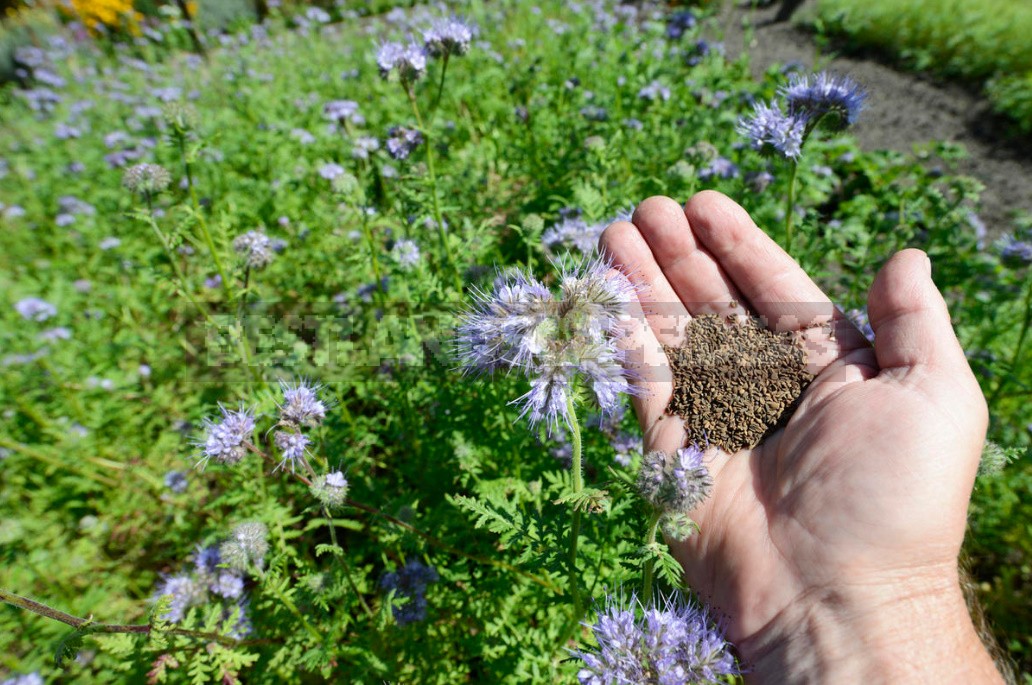
As you know, cover crops are preferably incorporated into the soil before flowering, but I slightly changed the recommendation to fit your requirements. Let me tell you more.
I am a supporter of minimization of labor in the garden. If it is possible to get rid of any type of work without harm to the case, I will not hesitate to give up the extra hassle. Well, at least from one crop, for example. As soon as the phacelia has grown up, I use a regular hoe to loosen the ground, simultaneously filling it with juicy greens. But not all of it. I leave several copies in different places of the garden for seeds. By the time it is time to plant onions and garlic, the phacelia has time to flower, drop seeds and re-ascend. I leave the seedlings to grow as long as they have time (the frost will do everything for me), but I plant a new portion of phacelia in the aisles. In the spring, it will have time to rise and grow up before the heat comes. Onions and garlic do not interfere with its shoots: they are too small, and I sow them not in a row, but in the aisle. When the phacelia grows up, I carefully cut it under the root and cover the soil on the bed.
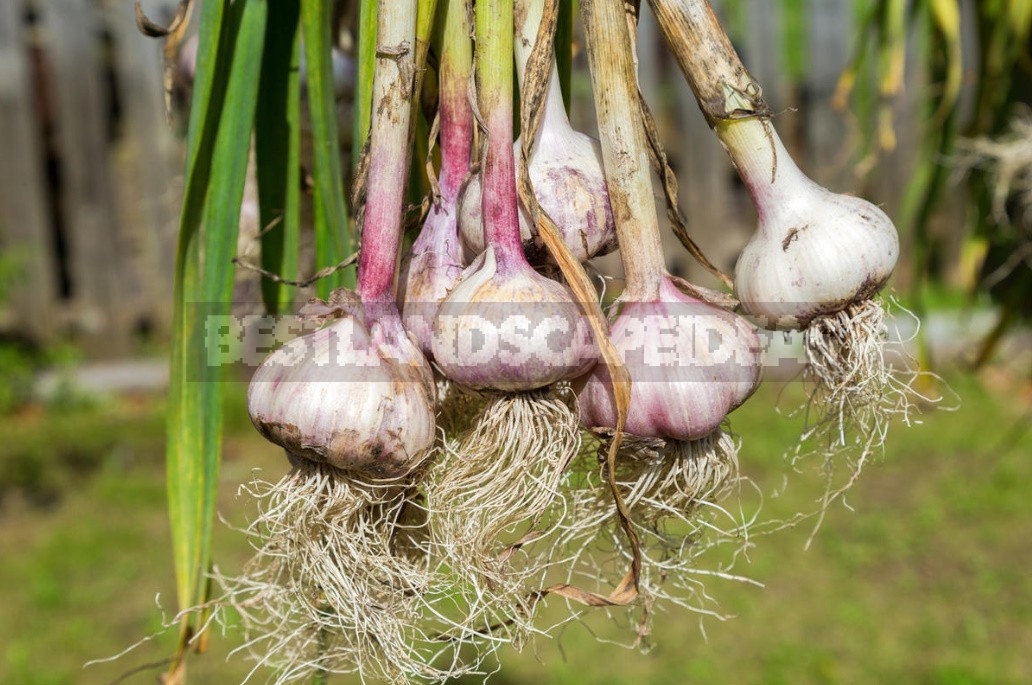
Pros of the method: peas saturate the soil with nitrogen-a little, but enough for spicy vegetables. Phacelia loosens dense black soil, increases fertility. My soil gets a double dose of siderates-in the fall and spring — and a double benefit!
Of course, ideally I would like to allow the soil to restore fertility naturally, but there is nowhere else to put onions and garlic. We have to speed up the decomposition of organic matter. I use EM drugs for this purpose. The advantages of their use: first, organic matter decomposes much faster, the soil becomes lighter, crumbly, after the rain is not covered with a dense crust. Secondly, there is no need to look for another landing place: apparently, useful microorganisms successfully cope with pathogenic ones, since the bulbs grow healthy.
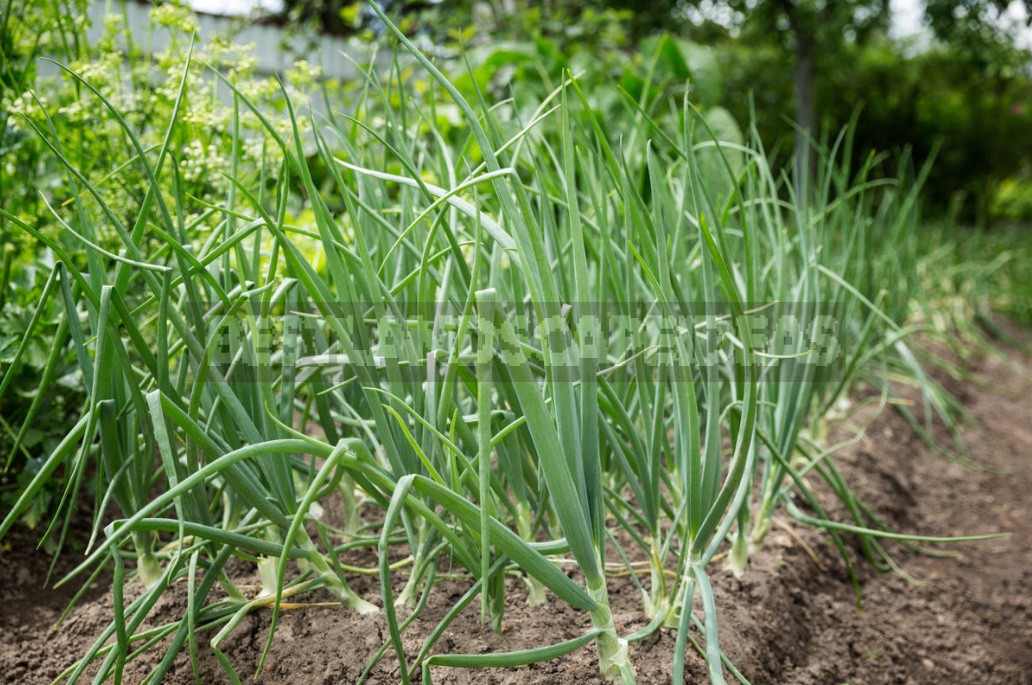
Feeding during planting
When planting, I use wood ash. With a hoe I loosen the furrow, with a planter I make nests for bulbs or teeth and carefully sprinkle the furrow with wood ash.
Timing of fertilization
I have already said that it was difficult to deal with the fertilizer system. The main problem I had to face was the discrepancy between my weather realities and the classic timing of fertilization. Spring often begins in February, so by April, the onion and garlic are already well overgrown with greenery. So somewhere in this period and spend the first feeding.
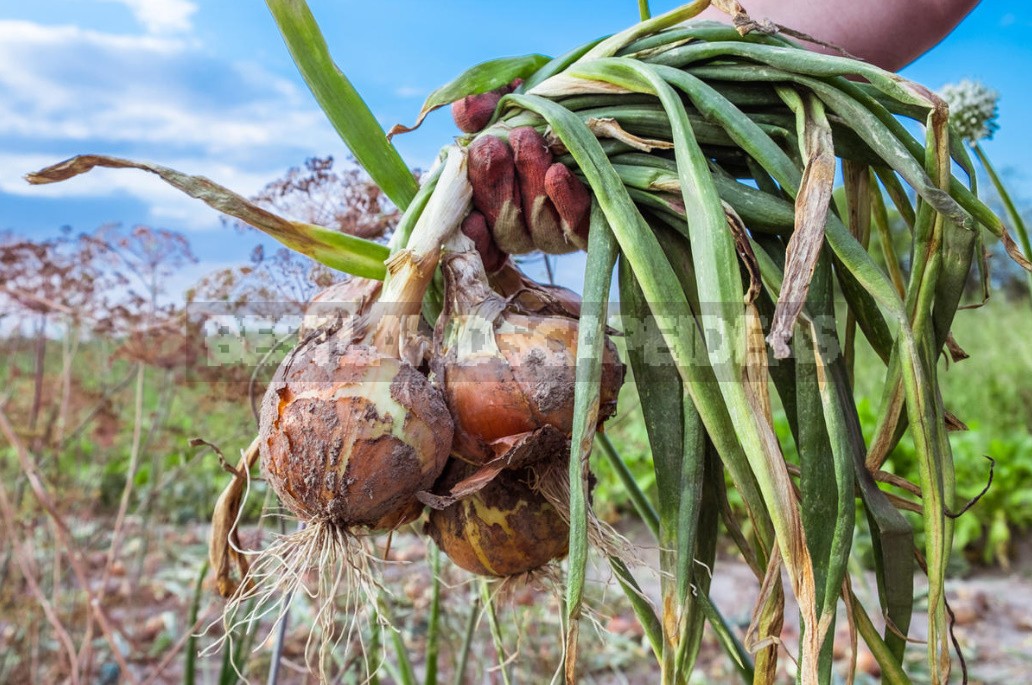
What is the use of fertilizing
I want to say a few words about the feasibility of fertilizing onions and garlic. For myself, I have identified three main positive points.
- Fertilizing, without a doubt, increases the yield. I can’t say that the bulbs grow the size of my head, but they are the size of my fist. I don’t need any more. A trifle, it would seem, but preparations with garlic can be made easily: large teeth are much easier and faster to clean than small ones.
- The shelf life of the crop has significantly increased.
- Onions and garlic are much tastier, although I have not changed the varieties. There can be no mistake, because the tasters were … children. They stopped doing research on the salad, carefully pushing the onion slices to the edge of the plate. And they suddenly fell in love with summer buns — vegetable, with a mountain of onions in the filling! But before the nose turned up from them, even did not want to try.
So far, I haven’t found a single negative in the feedings. As I think, if you follow the dosage and take care of the health of the soil, everything will be fine. I would like to know how our summer residents grow onions and garlic: with or without fertilizers?
